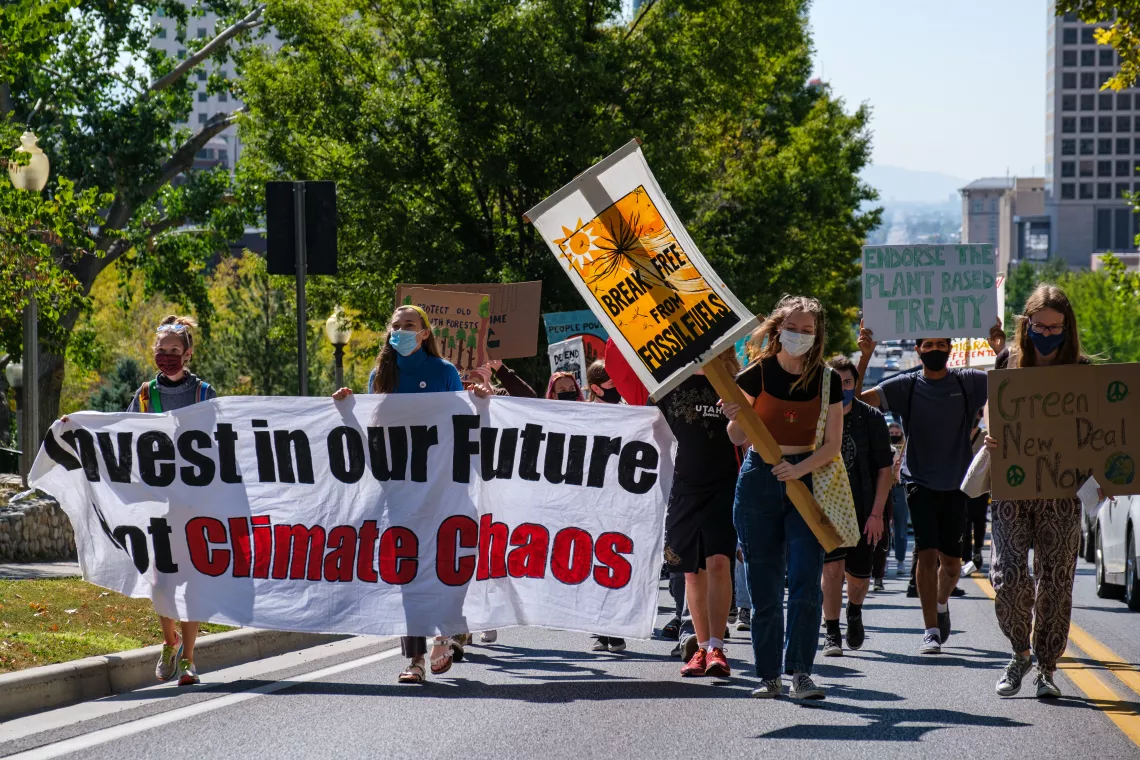On July 22nd, the U.S. Environmental Protection Agency (EPA) announced the 25 recipients of the Climate Pollution Reduction Grant (CPRG) implementation grants. These grants support state, local, and regional efforts to combat climate pollution.
Utah's submission, the Beehive Emission Reduction Plan, stood out among nearly 300 applicants, earning the Utah Department of Air Quality (UDAQ) almost $75 million from EPA. This grant will support the implementation of Utah’s first Climate Action Plan, a historic milestone Sierra Club advocates are celebrating in Utah.
“The Beehive Emission Reduction Plan is a critical step forward for Utah, and we commend our state for its efforts in reducing emissions and supporting cleaner air initiatives through the Inflation Reduction Act,” said Rebekah Ashley, Lead Organizer for Climate and Energy at the Sierra Club in Utah.

Photo by Ryan McCalmon
Utah’s emission reduction plan is projected to reduce greenhouse gas (GHG) emissions by approximately 430,000 metric tons of CO2 equivalent by 2030, and by around 1.4 million metric tons by 2050. This is the carbon reduction equivalent to cutting out 3 million barrels of oil from Utah’s consumption.
How? The plan will target four main areas: buildings, electric power, industry, and transportation. It will be carried out over five years from October 2024 to October 2029 and will provide benefits to communities that are low-income and disadvantaged which are often the same communities most impacted by climate change.
Why this matters:
Communities in Utah are facing increased risks from extreme weather events (like heavy rainfall and flooding), extreme temperatures (such as severe heat), wildfires, and smog. These issues can lead to a range of problems, including transportation challenges, economic damage, and worsening health outcomes.
Some groups are particularly at risk, including children, the elderly, those with existing health conditions, and people who have a low income. Measures in the Beehive Emission Reduction plan will aim to address these challenges by improving health through solutions like clean energy and energy efficiency. It will also address issues related to extreme weather, helping to protect homes and communities from damage.
To support the development of the plan, UDAQ hosted ongoing stakeholder engagement sessions in 2023. Over the past year, community advocates have submitted comments, calling for DAQ to leverage funding for bold climate action with an emphasis on cleaning up the public transportation and buildings sectors, and prioritizing investments in communities that are disadvantaged.
“Our state plan has a strong emphasis on cleaning up public transit through electric vehicles, electric buses, electric vehicle charging stations, and e-bikes. This will help tackle pollution from our largest emitting sector and boost investments in clean transportation and zero-emission vehicles in communities most impacted by environmental injustice,” said Rebekah Ashley.
The plan will provide:
- Up to 1,800 electric vehicles, including delivery vehicles, transit buses, school buses, and more.
- 2,000 e-bikes
- 1,100 charging stations
- Support for residential solar
- Support for reducing methane emissions at 800 oil and gas facilities in the Uinta Basin
- Energy assessments to support energy efficiency planning in industrial and commercial buildings, including Public K-12 school buildings
- Outreach, education, and workforce training programs for individuals and small businesses in Utah
For the full list of funded measures in Utah’s Beehive Emission Reduction Plan, please see UDAQ’s Implementation Grant Application Work Plan.
“I am excited that Utah will receive funding for these programs that will have an immediate impact on reducing carbon emissions and cleaning up our air,” said Joan Entwistle, a volunteer at Sierra Club Utah who has played a significant role in shaping the plan. “I am particularly pleased to see the involvement of energy coaches to assist residents and small businesses in Utah communities in accessing IRA funds.”
UDAQ will implement the Beehive Emission Reduction Plan over five years from October 2024 to October 2029. UDAQ will track, measure, and report on the plan’s progress with regular updates, highlighting the impact through reductions in greenhouse gasses and pollutants.
Stay tuned for updates, as Sierra Club Utah advocates will be following closely and engaging throughout the process to ensure the full benefits of this plan are realized. For any questions, please reach out to Rebekah Ashley, Lead Organizer for Climate and Energy, at rebekah.ashley@sierraclub.org.